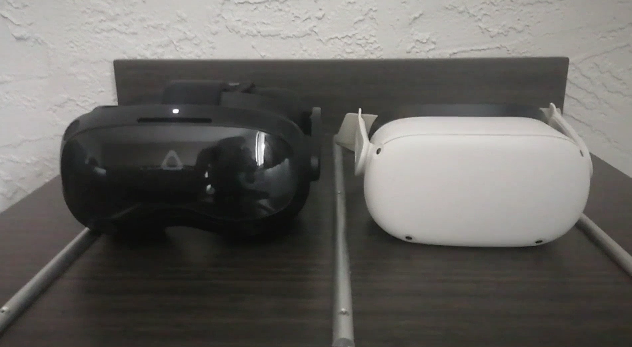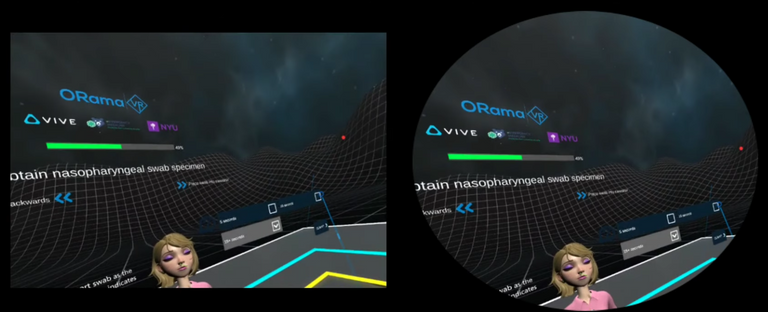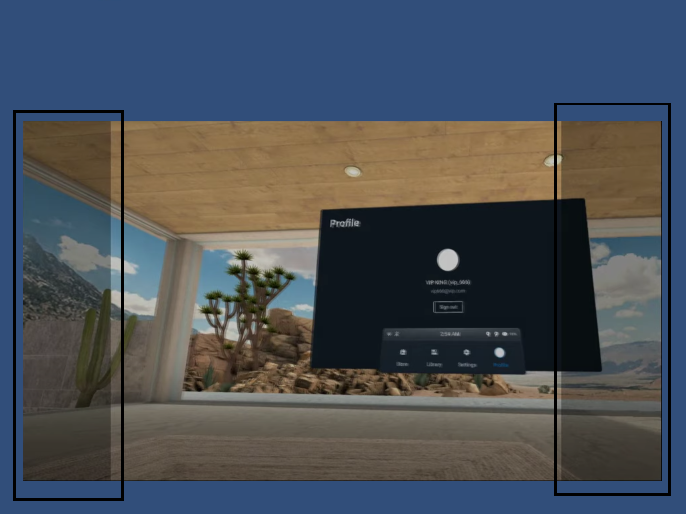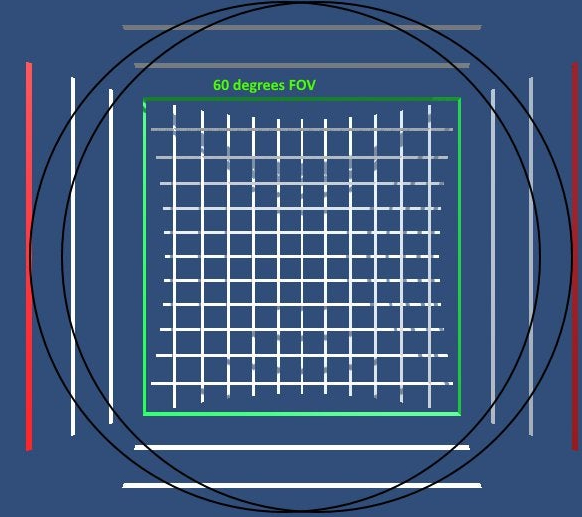Impressions, Comparison & Verdict
Hello my fellow VR enthusiasts!
Let’s say you need to go somewhere. Do you take a car, ride a motorbike or go in a taxi? The answer depends on many different factors and is precisely how comparing Quest 2 to HTC Vive Focus 3 feels like. Both headsets are standalone, just like all vehicles mentioned have engines, but their use cases are quite different, and because of that, the ultimate answer, which one is better, will not be the same for everyone. That’s not to say we cannot compare the two. Especially when it comes to technical details like optics, we can and we should.
HTC Vive Focus 3 is a new standalone headset officially marketed as a business headset, but it’s safe to say it’s also Quest’s first serious competitor in this market segment. HTC themselves also did not shy away from gaming references making it obvious their headset is not operating in a vacuum. Moreover, Vive Focus 3 is a hybrid headset, and just like Quest, it can be connected to a PC if necessary and act as a PCVR device. HTC’s growing experience (after Vive Focus and Vive Focus Plus) is starting to pay off but is Focus 3 ready to compete with Quest 2 on its own turf? Let’s take a closer look at both devices and see how they stack up.

First Impression
Looks are always a bit of a personal choice, after all, VR is about the worlds within. Having said that, Vive Focus 3 maintains a premium look that makes everyone wearing it look good and professional. It has a serious vibe to it, doesn’t look like a gaming device, and makes an excellent first impression. Quest 2 has a simpler, more ovoid design that is widely recognizable and familiar even to those outside VR space. Nothing wrong with either of them.
Comfort
Quest 2 comes with a soft strap that can be easily replaced with a rigid one if needed. There’s a broad selection of third-party straps as well as the official “Elite Strap” from Oculus for $49. Soft straps are frictionless and portable but do make the headset feel more front-heavy. Rigid straps eliminate that problem but have issues of their own, as there have been wide reporting of their tendency to snap, plus they’re not as comfortable when trying to lean or lay down. In my case, I use a dual soft strap replacement from VR Cover, which seems to offer the best of both worlds, and it’s good to have such a variety of options, both stock and third party.
On the other hand, Vive Focus 3 does not offer any customization and instead tries to achieve universal comfort right out of the box. And yes, the headset is indeed comfortable; a rigid strap makes for a good fit, while the knob at the back ensures everything stays in one place. It’s all quite convenient and easy, even for those who are not used to VR. The headset sits firmly, doesn’t move around, and is suitable for prolonged use. Its battery is placed in the back, which allows for a good counterbalance and makes Focus 3 feel less front-heavy than Quest 2. There’s also nothing to break or snap: back, front, sides; it’s all part of one sturdy headset. Generally, Focus 3 feels most comfortable when used for standing and room-scale VR. When sitting, its added weight becomes more noticeable, and you can’t really lean against the wall due to the knob.
Focus 3 supports granular IPD adjustment with a range of 57mm to 72mm, making it one of the largest for any headset. Oculus Quest 2 does not have a granular slider and instead relies on three fixed options: 58, 63, and 68.
Oculus Quest 2 weights 502 g (with a soft strap), and Focus 3 weights 785g.
Controllers
Both controllers use somewhat similar technology that utilizes tracking rings. The button layout is also nearly identical. Focus 3 controllers are visibly larger and also rechargeable via USB-C port. It’s a better and more elegant solution that doesn’t require swapping AA batteries the way Quest 2 requires, but unfortunately, this might be the only good thing about them. Overall, Focus 3 controllers feel pretty cheap, plastic, unwieldy, and not premium at all. Especially the trigger button sound very plastic, like a toy gun or an old joystick found in an attic.
When compared, Quest 2 controllers look significantly better made. Buttons feel responsive and satisfying with a nice punchy sound. Plastic looks more premium with a slippery white finish around triggers and black matte around buttons.
Setup and Login
Both headsets follow a similar playbook. Users are asked to pair their mobile companion app, pair controllers, and set up the guardian boundary. Facebook pioneered this when they released their original Quest, so all HTC had to do was copy what already works. Therefore imagine my disappointment when I encountered several weird bugs and issues along what otherwise should have been a simple and hassle-free process.
First, after pairing, the companion app failed to recognize my device. Then, despite buying a brand-new unit from a hardware shop, my private account would sometimes get replaced by some mysterious “VIP KING.” This spooked me out a bit when it happened the first time. Clues point to a distributor from China called VIPshop, but either way, if my unit was opened and later resealed, why didn’t factory reset remove all of the data remaining. Will my data also stay on the device after I factory reset it? And if it wasn’t opened, then it means the whole setup is even more broken, with accounts getting mismatched for no reason.
This and other issues I encountered show Vive Focus 3 is still a work in progress. By comparison, Original Quest was released in May 2019, so Oculus had plenty of time to iron everything out, and of course, the entire setup is a seamless affair. There’s one notable difference, though; Quest 2 requires a Facebook account to log in. You cannot use a throwaway account; you have to use your real name, and even if you do, it still might not be enough if Facebook deems your account is not in good standing. This can be a potential deal-breaker for many. By contrast, accounts in Vive Focus 3 are more nominal: it doesn’t matter what email you put in, it doesn’t matter how you will call yourself, they’re just there to give you access to your app library.
There might be a couple of different workarounds for Quest 2, but they all limit its functionality and are quite complicated.
Visual Fidelity
Let’s start with base specifications:

The most notable improvement over Quest would be the resolution. HTC Vive Focus 3 taunts a combined resolution of 3664 x 1920, and to make this possible, it’s been fitted with two LCD panels instead of one (and that’s also why it supports granular IPD adjustment). On paper, that’s a 1.7x increase over Quest 2, but in reality, you’d be hard-pressed to say how big the improvement truly is. My subjective guess would put it at around 25% for others; it might be different. I generally find Quest’s resolution quite acceptable, but of course, the bigger the resolution, the better, every increase in clarity is always welcome. There’s also no discernible screen door effect on Focus 3, so in that respect, it delivers.
When it comes to the field of view, Focus 3 boasts 120 degrees compared to modest 90-ish degrees on Quest 2. But this is where things get a bit more complicated. Indeed there’s an increase in horizontal FOV (116 vs. 88 ) but at the cost of the vertical field of view (96 vs. 108). So basically, FOV on Focus 3 is larger horizontally but smaller vertically and far from the advertised 120 degrees.

I personally did not find the new rectangular shape distracting or unusual. Still, at the same time, I also didn’t notice it being a whole lot bigger either. Experience may vary depending on selected IPD, shape of our head, how much you’re used to standard “periscope” field of view, and so on. Games and immersive experiences seem to benefit a bit more from additional peripheral vision but generally, going back to Quest 2 wasn’t a big deal as FOV feels pretty much similar.
Both Quest 2 and HTC Vive Focus 3 use high-quality fresnel lenses. I didn’t notice any chromatic aberration, distortions, or pupil swim. Glare is within acceptable levels, although more pronounced on Vive Focus 3. When it comes to sweet spot, Quest 2 wins hands down. Focus has a significant problem with that, and its narrow sweet spot causes everything that’s not in the centre to lose its sharpness. In my case, even with everything set up properly, I could still notice a bit of blurriness on the far edges, and when attempting to fix that, it would, in turn, make another part of the screen bit less sharp. Compare it with Quest 2, and you immediately start to appreciate how vital a wide sweet spot can be for comfort.

I also noticed a difference in the amount of stereo overlap. Less stereo overlap means far edges of the image are rendered only for one eye. Again, this can vary depending on selected IPD and other factors, but the amount of non-overlap is definitely more significant on Focus 3 than on Quest 2.


These issues aren’t by any means deal-breakers, and after few hours of using Focus 3, I forgot about both, but it would be nice to have perfect visuals without having to get used to anything. As it stands, resolution and FOV are indeed better than on Quest 2 but at a price of a narrower sweet spot, less stereo overlap, and more noticeable god rays.
Tracking
Tracking is Facebook’s bread and butter. Given positional tracking was first introduced in 2014 (with the release of the DK2 model), we should expect nothing but excellence in that regard. On the other hand, HTC has a pretty spotty record when it comes to tracking. Fortunately, Vive Focus 3 stands up on its own and has no trouble figuring headsets movements or following controllers. Both headsets perform pretty much flawlessly. It seems HTC finally got the hang of it, and hopefully, moving forward, all their headsets will simply work as intended.
Performance and Battery Life
Both Quest 2 and Focus 3 come with the same Snapdragon XR2 chipset, but each utilizes it differently. While Quest 2 is reportedly underclocked in order to preserve battery and prevent overheating, Focus 3 allows itself to take full advantage of its capable chipset. The end result is a significantly improved performance in Focus 3.

According to Geekbench, when compared to Quest 2, Focus 3 scores twice as good when running single-core and 2.5x times better when running multi-core. Most of this additional performance gets subsumed by higher resolution, so do not expect Focus 3 to run next-level apps and games. There’s room for developers to make their apps look nicer on Focus 3, but only time will tell how much leeway Focus 3 actually allows and if developers will be bothered to utilize those extra resources.
To reach its ambitious performance targets, HTC had to make some tradeoffs. First of all, more computation equals shorter battery life. Focus 3 comes with a massive 26.6Wh battery, almost twice the Quests capacity of 14Wh. Secondly, more processing power means more heat which somehow needs to be dissipated without making users sweat. In the case of Focus 3, this is done with a bigger and noticeably louder fan.
Fortunately, as mentioned earlier, Focus 3 fits its battery at the back, where it doubles as a counterweight, so its added size isn’t really an issue. As a result, both headsets last around 2 hours on full charge despite notable differences in battery consumption. It’s also worth mentioning batteries in Focus 3 are swappable, so there’s nothing preventing users from using more than one battery pack in an alternating manner. Both headsets also allow charging while in usage (though it’s not recommended).
As far as cooling solutions go, perhaps HTC has already started addressing fan noise through firmware updates, or maybe simply being aware of this issue beforehand caused it to be less of a surprise, but overall, I didn’t find it as distracting as I thought I might. Obviously, Quest 2 is much quieter. So much so that I had to double-check if it even has a fan at all. Therefore it’s no wonder that in direct comparison, Quest 2 is pretty much silent. In contrast, Focus 3, at its loudest, sounds like a laptop that was suddenly forced to perform heavy-duty (together with a slight airflow that might brush your face whenever this happens).
UX and Software
For many, content and UX is both the best and the worst part of Oculus. Quest 2 remains fully integrated with Facebook, which means logging in with a social media account and allowing Facebook to collect, store, and process various data signals that can be obtained from the time spent in the headset. There’s also plans to include advertisements, so it’s apparent Quest has to be priced competitively to offset all of that. But it’s more than just cheap; it’s insanely cheap. Quest 2 costs $300 for a 128GB version with special offers like Black Friday or buy one get one $100 less appearing on the regular.
Moreover, Quest users have access to a vast and carefully curated library of well-made games and apps. There are many first-party titles, titles funded or guided by Oculus, and titles that belong to companies that were bought out. For example, Facebook now owns Beat Games, the studio behind the very popular Beat Saber, so chances of it coming to Focus 3 are next to none.
Vive Focus 3, on the other hand, is a brand new product with a brand new ecosystem. There’s no social network or data harvesting, but not a lot to do in terms of content either. There’s a selection of business and collaboration tools made in-house by Vive as well as a couple of ported VR games like Hyperdash, but it’s easy to see it’s still early days. There’s no Youtube VR or any other app that could serve curated 360 and 180 content. There’s no in-built web browser, and users instead have to rely on Firefox Reality. I’m not expecting any exclusives or massive, well-funded games on Focus 3, but it would be nice to see more content added. If I count correctly, there were only four new apps in the last 60 days, which is not a great start.
Both headsets offer wireless (and wired) streaming that lets users connect their HMD to a computer and use it as a PCVR device. In the case of Quest 2, it’s “AirLink,” and in the case of Focus 3, it’s “VIVE Business Streaming.” In either case, everything seems to works as intended. Additionally, Quest users have access to a selection of third-party tools like Virtual Desktop, ALVR, and VRidge.
Hive Verdict
So, after all is said and done, which headset is better? And the answer is:
Quest 2. Quest 2 is still better.
It’s a subjective verdict based on a totality of factors and circumstances. So if it’s like saying a motorcycle is better than a truck, or vice versa, then that’s because you don’t just look at the vehicles but also consider current weather, road traffic, and so on.
HTC Vive Focus 3 is a worthy challenger. It marks an end to a near-full monopoly that Facebook was enjoying in the standalone segment. But even if we exclude the price and for a moment assume they both cost the same, it still falters in many key areas, especially when it comes to software and content. In the case of hardware, it excels Quest 2, but it’s not all black and white. There are all sorts of quirks and drawbacks, which make the superiority of Focus 3 less obvious and definite than it could be.
So who might be interested in Focus 3 and for whom it might be better:
- Business sector looking for a professional, no-nonsense solution
- PCVR enthusiasts who are interested in hybrid headsets for wireless streaming. Especially those who do not own base stations and cannot easily upgrade to Vive Pro 2 which can cost more if bought as a full kit (and that’s without the wireless add-on that Focus 3 does not require).
- VR users who, for whatever reason, would never purchase a Quest but still want a good standalone headset in their collection and are unwilling to wait for Pico Neo 3
Have a great day and keep rocking!